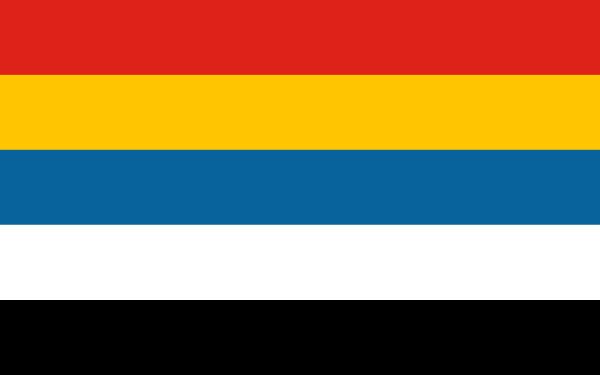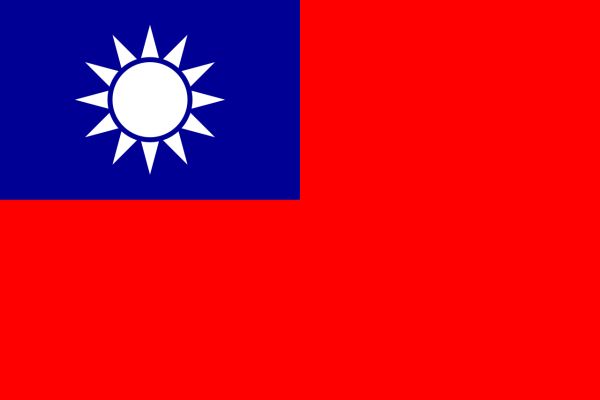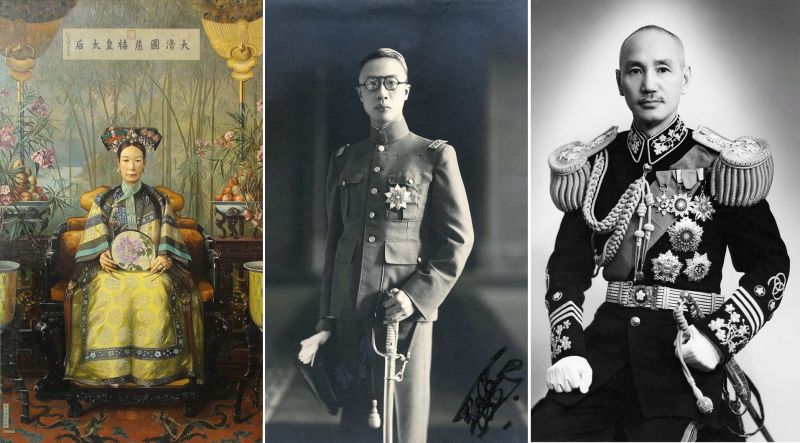MONDAY, 17 OCTOBER 2022
On 10 October 1911, a series of uprisings started that, over the course of the next few months, led to the fall of the Qing Dynasty and the birth of the Republic of China. After a decade of violence and political tug-of-war, the Chinese Nationalist Party led by Chiang Kai-shek ended up in control of the republican government.
The island of Formosa is about 200 kilometres from the Chinese coast. The island was ruled by Qing China between 1683 and 1895, when it was ceded to Japan. A few weeks after Japan’s surrender in 1945, officials from the Republic of China stepped of a boat in the north of Taiwan with a United Nations mandate to administer the island until a final peace treaty was signed with Japan.
In his authoritative report of the period, Formosa Betrayed, George H. Kerr narrates that the officials of the Chinese republic saw Taiwan (or the island of Formosa) as a warehouse full of luxuries that needed to be plundered as quickly as possible. Factories were dismantled and shipped to Shanghai. Furniture, ornaments, bicycles, money, jewellery, and anything else that looked like it might have value was looted and robbed either by government officials, or by soldiers brought in to terrorise the local population.
By early 1949, it was clear that the republican government, then based in Chengdu in southwestern China, was going to lose the civil war against Mao Zedong’s Communists. Between January and December 1949, most of the republican politicians and institutions, a lot of cultural treasures as well as financial resources under the control of the Republic of China were moved to the island of Formosa.
The six million inhabitants of Taiwan were not consulted about this takeover of their island by the Nationalists. For the next four decades, the population’s complaints about everything from the denial of human rights to the corrupt expropriation of property were brutally silenced.
By the early 1990s, enough of the Civil War era politicians had died out, and supporters of the idea that the government in Taipei would eventually retake power in Mainland China became fewer and fewer. In 1996, the first Taiwan-born person was chosen as president of … the “Republic of China”, because calling it what it really was – the Republic of Taiwan, was a controversy that would send the missiles flying across the Strait of Taiwan.
On 10 October 2022, several hundred thousand people in Taiwan actively celebrated the anniversary of the founding of the Republic of China (millions, of course, enjoyed the holiday without attaching any political value to it). The president of the “Republic of China”, Tsai Ing-wen, also solemnly celebrated the day with a speech. Although she referred to Taiwan as the “Republic of China”, most of the speech was about the island of Taiwan.
In a speech on 4 August 2022 in response to live-fire drills by the Chinese navy and army around Taiwan, she referred to the threat to “our nation’s sovereignty”. The question remains: What nation was she talking about? Taiwan? China? If she was talking about the island of Taiwan with surrounding smaller islands under Taipei’s administration, and the 24 million Taiwanese (and other long-term residents), then why at all celebrate the founding of the Republic of China – which for all practical purposes is a decayed relic of Chinese history? I understand that the government in Beijing threatens to go to war the moment Taipei officially declares independence, but is that reason enough to still solemnly party on October 10th every year?
It is clear that to be able to distinguish between the official independence of Taiwan and de facto independence requires a lesson in political doublespeak. But that the government in Taipei still uses the flag of the losers of the Chinese Civil War, the flag of the looters of Taiwan and the oppressors of freedom and human dignity, and still after seven decades actively celebrates the founding of a state that has long ceased to exist, is sometimes difficult to grasp.


* * *
The dream of independence of millions of Taiwanese (not all, but a large proportion of the adult population) is understandable. Even in the seventeenth, eighteenth and nineteenth centuries, Taiwan was only an afterthought for the Qing government in Beijing. Then for fifty years the island was part of Japan, and for the last seventy years, it has been ruled separately from Mainland China. Generations of Taiwanese have been born and have lived their entire adult lives with the daily reality that the island is governed separately from China.
On the other hand, I also understand the argument of Greater China supporters, who consider the majority of the population of Taiwan to be part of the same ethnic family as the majority of the population of Mainland China. Language and cultural roots are also shared. Thousands of families in Taiwan have relatives in China whom they visit regularly.
I also understand that the government of the People’s Republic of China has an argument for reunification. They see themselves as the inheritors of Chinese history, with the responsibility to the ancestors and descendants of the Chinese population to make whole what had been broken by the end of the Qing Era.
Whether the People’s Republic can make a legitimate argument about jurisdiction over Taiwan requires a deep dive into the murky waters of treaties signed after World War II between Japan and America, and between Japan and the Republic of China. It was, for example, not spelled out specifically who Taiwan belonged to after Japan had ceded control over the islands.
Arguments aside, what sometimes irritates is the split personality of the government in Taipei. I appreciate the thorny problem that if independence is officially declared, the government in Beijing will have little choice but to carry out its decades-long threats. The Taipei government nevertheless walks a fine line. Passports are issued these days with “Taiwan” in large Roman letters, and “Republic of China” only in Chinese characters. Statements are made about Taiwan’s independence, but under the name “Republic of China”. Says President Tsai Ying-wen in an interview with the BBC after she was elected in 2020: “We don’t have a need to declare ourselves an independent state. We are an independent country already and we call ourselves the Republic of China (Taiwan).”
_Passport_2020.png)
If Taiwan were truly independent, would the president not refer to her country as the Republic of Taiwan? And how much does it matter that Taiwan is officially only recognised as independent by fourteen countries and doesn’t have a seat at the United Nations? Most countries do maintain diplomatic offices in Taipei, but none are official embassies, in deference to the People’s Republic of China that considers Taiwan a province of China.
The fact of the matter is, there are three actors in this play: The group advocating for Taiwanese independence, who make pretty strong arguments; the government in Beijing (and supporters of reunification in Taiwan), which also makes points that cannot be dismissed out of hand; and then there’s the government in Taipei which officially upholds the One China policy, but also makes no claim to being the legitimate government of Greater China, and – at least for the last two or three years – also claims that Taiwan is independent, but under the banner of the Republic of China. Can anyone be blamed for being confused?
* * *
What do I see as a more honest situation than the current shuffle closer to the abyss? I reckon: A cooler relationship with America – an unreliable “friend” at the best of times; a warmer relationship with Beijing – albeit with a government dominated by a political party that was not appointed by the Chinese people and cannot be removed by the Chinese people except with extreme violence; and increasingly less emphasis on the symbols of, and less reference to, the obsolete relic of history, the Republic of China.
Naive and unrealistic? I guess so.
———————-
A few useful links:
https://en.wikipedia.org/wiki/Theory_of_the_Undetermined_Status_of_Taiwan: “In 1950 […] United States President Harry S. Truman said that […] ‘the determination of the future status of Formosa must await the restoration of security in the Pacific, a peace settlement with Japan, or consideration by the United Nations.’ This statement of Truman is generally regarded as the origin of the Theory of the Undetermined Status of Taiwan. In 1951, Japan concluded the Treaty of San Francisco with the Allied Powers. It renounced all right, title and claim to Taiwan and the Pescadores without explicitly stating the sovereignty status of the two territories.”
https://en.wikipedia.org/wiki/Treaty_of_San_Francisco: “President Ma expressed that the Treaty of Taipei has voided the Treaty of Shimonoseki”
https://en.wikipedia.org/wiki/Treaty_of_Taipei: “Article 4: It is recognized that all treaties, conventions and agreements concluded before December 9, 1941, between China and Japan have become null and void as a consequence of the war.”
https://en.wikipedia.org/wiki/Taiwan_independence_movement: “The governments of the People’s Republic of China (PRC) and the Republic of China (ROC) oppose Taiwanese independence since they believe that Taiwan and mainland China comprise two portions of a single country’s territory. For the ROC, such a move would be considered a violation of its constitution.”
https://en.wikipedia.org/wiki/Political_status_of_Taiwan: Specifically look at the “Arguments for the Republic of China and/or People’s Republic of China sovereignty claims” and “Arguments for Taiwanese self-sovereignty claims and its legal status”
———————-
The birth of the Republic of China is celebrated on October 10th, and 1911 is seen as the first year of the Republican Era. Yet the Republic of China was not actually founded on 10 October 1911. A quick timeline:
1894-1895: War between China and Japan
1899-1901: The Boxer Rebellion
14 November 1908: Emperor Guangxu dies; one day later his aunt, the powerful Empress Dowager and Regent Cixi, dies (the suspicion is strong that she had her nephew poisoned)
2 December 1908: Aisin-Gioro Puyi, the two-year-old son of the Manchu Prince Chun, is crowned as the Xuantong Emperor, the last of the Qing Empire
10 October 1911: The Wuchang Uprising leads to a series of uprisings across China
November 1911: fourteen of fifteen provinces in China reject the Qing government
1 January 1912: The Republic of China is established
12 February 1912: Empress Dowager Longyu signs the abdication decree on behalf of the now six-year-old Puyi. This ended more than 2,000 years of imperial rule in China.

______________________